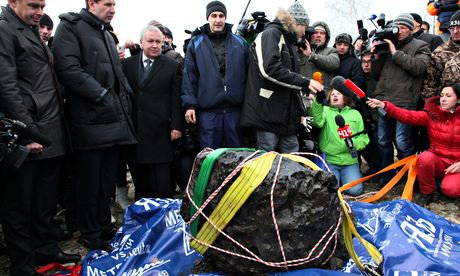
Many explosions stronger than Hiroshima bomb but most occur too high above ground to cause serious damage
Asteroids caused 26 nuclear-scale explosions in the Earth’s atmosphere between 2000 and 2013, a new report reveals.
Some were more powerful – in one case, dozens of times stronger – than the atom bomb blast that destroyed Hiroshima in 1945 with an energy yield equivalent to 16 kilotons of TNT.
Most occurred too high in the atmosphere to cause any serious damage on the ground. But the evidence was a sobering reminder of how vulnerable the Earth was to the threat from space, scientists said.
The impacts were recorded by the Nuclear Test Ban Treaty Organisation, which operates a global network of sensors set up to detect nuclear weapon detonations. None of the asteroids were picked up or tracked in advance by any space- or Earth-based observatory.
The former astronaut Ed Lu, speaking about the data at the Museum of Flight in Seattle, said: “While most large asteroids with the potential to destroy an entire country or continent have been detected, less than 10,000 of the more than a million dangerous asteroids with the potential to destroy an entire major metropolitan area have been found by all existing space or terrestrially operated observatories.”
Lu is co-founder and chief executive of the B612 Foundation, a research body dedicated to finding ways of protecting the Earth from dangerous asteroids.
The most dramatic asteroid impact in recent times occurred when an object exploded over Tunguska, Siberia, in 1908 with an energy yield equivalent to between 5,000 and 15,000 tons of TNT. An area of remote forest covering 770 square miles was flattened by the blast.
In 2013, a 500-kiloton meteor explosion above the Russian town of Chelyabinsk caused extensive damage to property.
Asteroid impacts greater than 20 kilotons occurred in South Sulawesi, Indonesia, in 2009, the Southern Ocean in 2004, and the Mediterranean Sea in 2002.
In 2018, the B612 Foundation plans to launch the world’s first privately funded deep space mission, Sentinel, which will use an infrared space telescope to identify threatening objects when they are still millions of miles away. It is expected to detect and track more than 200,000 asteroids in its first year of operation.





